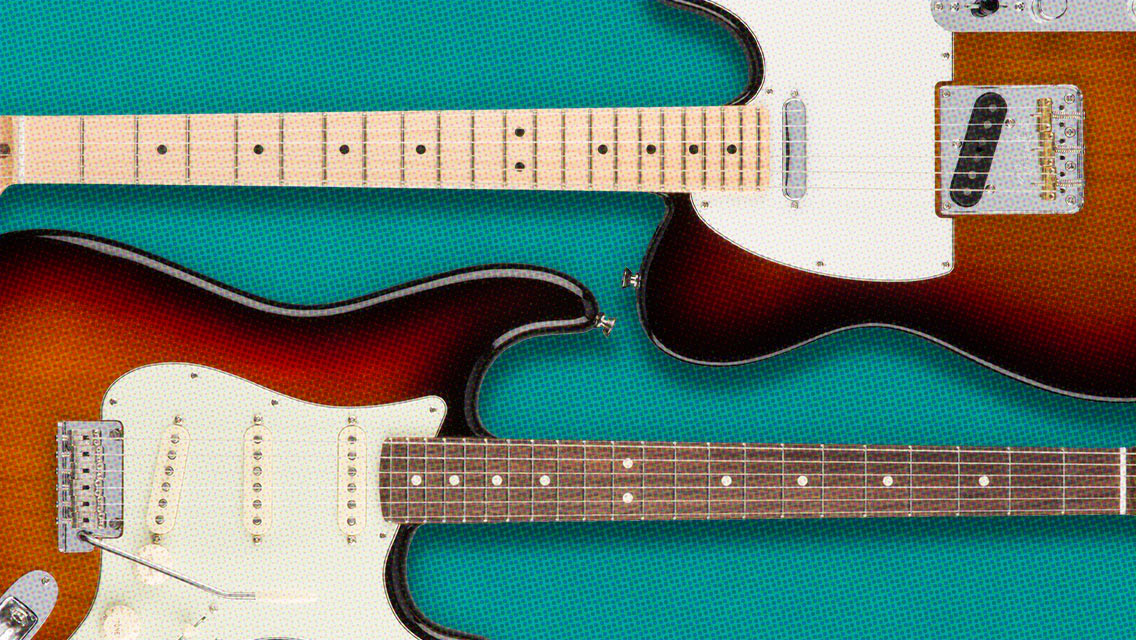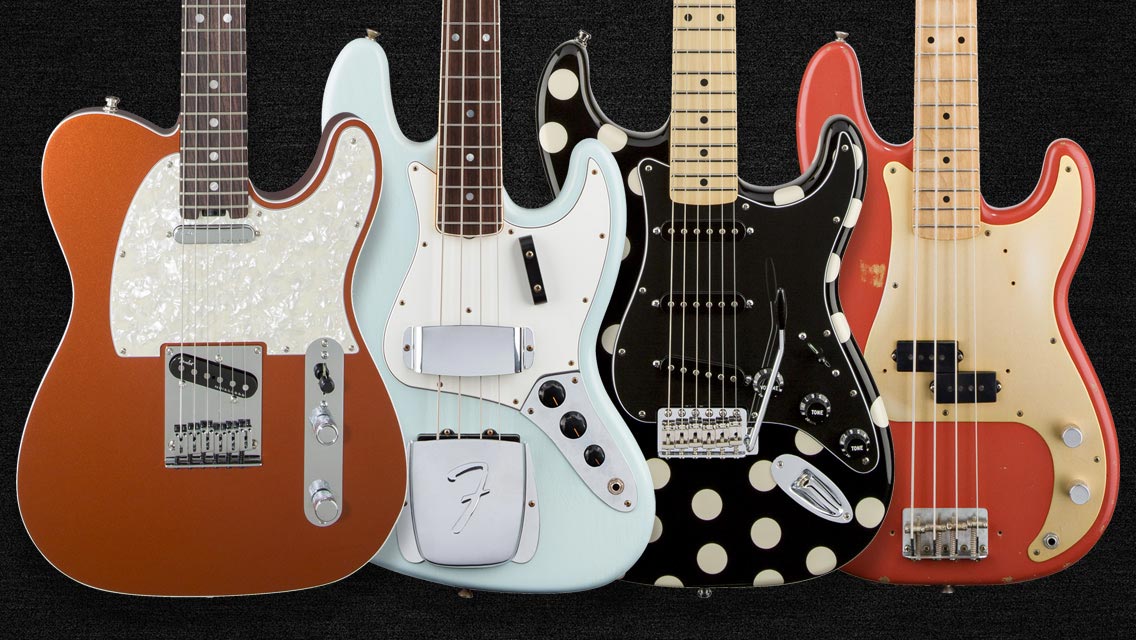4 Min ReadBy Ken Pearsall
Effects Guide: Compression Decompressed
How adding compression can take your tone to the next level.

Compression is possibly the single most misunderstood effect that a guitarist can use.
This is largely due to the fact that if properly used, it isn’t truly audible as an effect. So what does compression actually do?
Think of it as a helper. It helps to keep signal dynamics (the spectrum of quiet to loud sounds) under control so there is no need to crank the volume to hear quiet notes, only to have loud notes pummel the ears.
This is beneficial for both stage use (keeping a good mix with a band) and bedroom practice (to hear what you’re playing without waking the neighbors). It can thicken and add body to tone, and it can also be used to help add sustain.
Compression is one of the hardest effects to understand how to use proficiently. Let’s dig in and unmask some of its secrets.
What Is Compression?
Compression is an automatic volume control. It turns down the volume when a signal becomes louder than a set level and turns it back up when the signal drops below that level.
This happens much faster than one could possibly turn a volume control manually. Set properly, it can be very transparent, adding to the sound without taking anything away.
To make good use of this though, we first need to understand a few terms about compression:
Threshold
The point above which the signal will start to be affected by the compressor. Signal level that is louder than this point will be turned down, while signals below this point will remain unaffected.
Ratio
The amount of compression applied to signals that break the threshold.
This is usually expressed in the form of 4:1, 6:1, 10:1, and so on. What this means is that if we have set a ratio of 4:1, signals that are 4db above our threshold will be turned down so they are only 1db above.
"Limiters" are almost exactly the same as compressors, but with a ratio of 10:1 or more. A “brick wall limiter” has a ratio of infinity:1 meaning that nothing is allowed to be above the threshold. Limiters function, and are controlled, in the same manner as compressors.
Attack
This setting adjusts the time it takes the compressor to reach the set attenuation amount after the signal crosses the threshold.
Release
The time it takes the compressor to turn back up to the original volume (called "unity gain") after signal input falls below the threshold. Many compressors have what is called an “auto release”, especially stompboxes with few controls. Auto release automatically adjusts release time based on how much attenuation is taking place in order to keep things as transparent as possible. Low amounts of attenuation will trigger a fast release time, while greater amounts will be slower.
Makeup Gain
Also can be labeled as "output," "gain," or similar variations. With compression turning down the signal, a need arises for a way to bring the signal level back up. This control simply allows you to turn up the output in order to offset the amount of gain reduction you are incurring.
If you don’t have this control on your pedal, there’s a good chance the circuit is using “auto makeup”. This means that the compressor is automatically turning up the output based on its current settings and how much gain reduction it is expecting to do.
Optical Compression
This type of compression uses a light source and light-sensitive resistor to adjust the volume of the signal. This is an especially smooth compression that is easy to get a good sound out of, and is very natural sounding.
It's great for evening out your volume between chords and single notes. It can be very transparent and forgiving with slow attack and release times, while faster settings can add a sort of “bloom” to notes and keep chord strumming smooth and even, without certain notes or chords sticking out more than others.
FET Compression
A classic form of compression borrowed from a studio favorite. The gain is controlled here by a FET (Field Effect Transistor), which is a type of transistor favored for its ability to emulate vacuum tubes among its many other benefits. This type of compression is known for adding a certain “smack” or “snap” to the sound. This is great for all types of playing with the right settings, but especially handy for funk, reggae, ska and other genres where that signature snap can be useful.
VCA Compression
This is by far the most common type of compression found in guitar pedals. VCA stands for Voltage Controlled Amplifier. This is a method of gain control in which the AC guitar signal is converted to a DC voltage. That voltage tells the VCA when to turn up or down. VCA compressors are exceptionally useful due to a wide range of attack/release times and great controllability which allows them to simulate the sounds of a slow, smooth optical compressor and a super fast, snappy FET compressor. It’s an all-around great style of compression for when the need to handle a wide variety of material arises.
Other Types Of Compression
While the above are the most common types of compressors available to guitarists in stompbox form, you may find yourself someday using rack gear that gives you access to a lot more types of compression. I’d just like to briefly touch on a few types you might come across in this format.
Vari-Mu
A vacuum tube compressor that uses a special tube that is able to vary its output dependent upon its input. Very expensive but beautiful sounding. Has its own unique sound that nothing else comes close to.
PWM (Pulse Width Modulation)
Pulse Width Modulation compressors uses a high-frequency oscillator to sample the input signal into slices it uses to control compression. This can be extremely transparent and is especially great sounding on acoustic instruments.
There are many more types out there as well, but these are the major ones players will likely come across.
Adding Compression to Your Rig
Context is key here.
Most players use them very near the beginning of the effects chain.
Compressors are designed to hold dynamics within a certain range. Therefore, they aren't usually placed after delays or reverbs, as they will alter the fading out of these effects and won’t sound natural.
But you may not want a compressor in front of overdrives or distortions because if they are high gain they will already severely limit dynamics and compression isn't needed. In low gain overdrives you will usually want to preserve the effect of hard-picked notes getting more drive than quieter ones. Using a compressor in front of these is possible, but players need to be careful to avoid altering the tone too much.
Compressors are most useful for clean tones, or slightly driven ones, and as such should appear as close to the beginning of your chain as is possible. Compression performs better after any wah pedals, but try it both before and after a volume pedal. Before the volume pedal, the volume will work just like normal and allow the compression to do its job unaffected, but placing it after a volume pedal, will allow the signal to be driven into the compressor’s threshold. This can be handy for getting more sustain for lead playing and backing off the volume slightly for rhythm.
Conclusion
Compressors may not be as noticeably “cool” as a wah, an overdrive or delay, but they are the best friends a player can have. A touch of compression can add a beautiful touch to anyone's tone and give it a professional, finished sound. It can add snap, presence, thickness and much more.
With enough practice, compression will come as easy as turning up the knob for more reverb.
Don’t miss out!
Be the first to know about new products, featured content, exclusive offers and giveaways.


